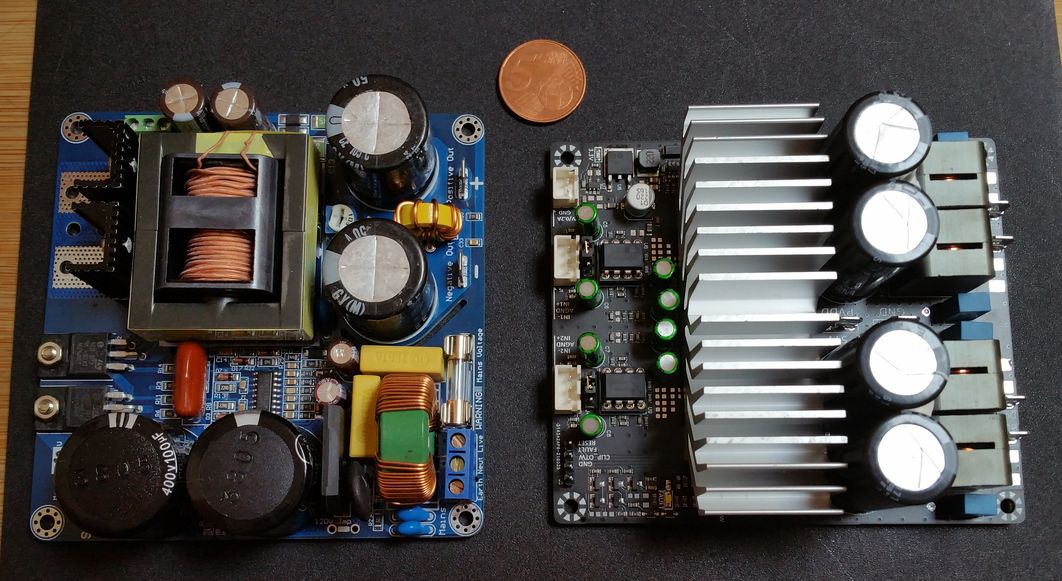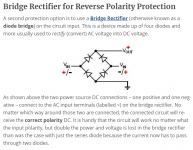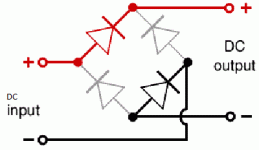D
Deleted member 148505
Ok. I'll see, at some point you have to get your hands dirty !
I will post some images once everything is assembled. Also I would have gone with pleasure on your achievements (Jlester, DrMordor) but with a tight budget for this project, I had to make -alas - this choice (3e audio) against my heart...
Thanks for the mention 🙂, the inductors used by 3eaudio is probably an unlabeled codaca 10uH CPD1715-100M. I also have them too and they are on par with ICE inductors 1D17A in terms of output THD performance.
With 36V rails, those inductors only heat up by 4 deg C above ambient temp. So I think you can use the module with rails up to 42V to 44V DC. Provided that the operating frequency of the module is 450kHz.
I think someone mentioned that those 3e modules are running at 600kHz, probably for AM interference avoidance. The whole system will run hot with that operating frequency. Only 1 resistor change is needed (30K ohms 0603) to change it to 450kHz.
Yes, the inductors used by 3eaudio are unlabeled on my three boards.
For the operational frequency, Is there a way to check it without an oscilloscope? using a multimeter?
(otherwise, just for information, the capacitors used are Nichicons muse B2010
and Rubycon ZLH S1710 63V1800uf. Not really being an electronics specialist, I'm not sure what it's worth or if it makes a big difference or not )
For the operational frequency, Is there a way to check it without an oscilloscope? using a multimeter?
(otherwise, just for information, the capacitors used are Nichicons muse B2010
and Rubycon ZLH S1710 63V1800uf. Not really being an electronics specialist, I'm not sure what it's worth or if it makes a big difference or not )
D
Deleted member 148505
Yes, the inductors used by 3eaudio are unlabeled on my three boards.
For the operational frequency, Is there a way to check it without an oscilloscope? using a multimeter?
(otherwise, just for information, the capacitors used are Nichicons muse B2010
and Rubycon ZLH S1710 63V1800uf. Not really being an electronics specialist, I'm not sure what it's worth or if it makes a big difference or not )
Yes, if you have a multimeter with frequency measurement, turn the rotary wheel to Hz setting. Then place the red probe on the speaker out terminal.
It will also work just by touching the probe on the inductor's sides.
D
Deleted member 148505
Rubycon ZLH S1710 63V1800uf. Not really being an electronics specialist, I'm not sure what it's worth or if it makes a big difference or not
There will be not much difference on SQ with different PVDD bulk caps, unless the caps that were used are crappy to begin with or the main supply PVDD PCB routing is bad which are both not the case for your module. You can try opamp rolling 🙂
you mean when the amp is powered i guess?Yes, if you have a multimeter with frequency measurement, turn the rotary wheel to Hz setting. Then place the red probe on the speaker out terminal.
It will also work just by touching the probe on the inductor's sides.
Anyway, I don't think I have the skills to change one of those tiny resistors ... so 450 or 600khz, I'll have to deal with it!
Last edited:
D
Deleted member 148505
you mean when the amp is powered i guess?
Anyway, I don't think I have the skills to change one of those tiny resistors ... so 450 or 600khz, I'll have to deal with it!
Yes of course, if you want to check it if it's not powered on, then you have to remove the heatsink, and check the value of resistor connected to pin 8 (Freq_Adj) of TPA3255 IC. 10K = 600kHz, 30K = 450kHz
With 600kHz operating frequency, I think you can use up to 42V DC, don't worry much about the heat.
Some 36V SMPS can be adjusted to max 42V (like my LRS-350-36)
Yes indeed. But for now I am still waiting to receive the power supply (normally tomorrow) and the volume control (in about ten days) and to see what it gives with the NE5532P supplied before having fun with LM4562NA, OPA1612, 1656 or others.You can try opamp rolling 🙂
And, as there was only one power supply in stock, I will have to wait a bit to mount everything in a 6-channel box. As I said, it is to power 3-way diy speakers but also to be used when designing new speakers. To this end, each amplification card and its dedicated power supply must potentially be able to be disconnected from the others in order for example to use only one stereo output. So, in the end it will be a working tool before being a "pleasure" amp ...
I'll try to do that!😉Yes of course, if you want to check it if it's not powered on, then you have to remove the heatsink, and check the value of resistor connected to pin 8 (Freq_Adj) of TPA3255 IC. 10K = 600kHz, 30K = 450kHz
I chose 36V 300w smps from connexelectronic. As it is to develop hifi speakers for home use, i think it should be fine.Some 36V SMPS can be adjusted to max 42V (like my LRS-350-36)
Thank you in any case for all these indications which will not remain useless!🙂
As expected, I received the power supply yesterday:

A quick question, for the power supply of the Lite MV06 volume control module (not yet received), it is requested from 9-12V AC. Both the power supply and the amplifier have an auxiliary output of around 12V. But is it DC or AC? (it is not indicated anywhere, neither on the documentation of the amplifier nor on that of the power supply) And, if it is an auxiliary output in DC, is there a way to connect the volume control module on it ? or should I provide a converter or an additional power supply dedicated only to the volume management module?

A quick question, for the power supply of the Lite MV06 volume control module (not yet received), it is requested from 9-12V AC. Both the power supply and the amplifier have an auxiliary output of around 12V. But is it DC or AC? (it is not indicated anywhere, neither on the documentation of the amplifier nor on that of the power supply) And, if it is an auxiliary output in DC, is there a way to connect the volume control module on it ? or should I provide a converter or an additional power supply dedicated only to the volume management module?
D
Deleted member 148505
We're not sure if SMPS300RS aux can supply enough current for the volume module without running into any problems.
Just get a buck converter for the volume module, and adjust the buck converter's output to 10VDC. You can connect it in any orientation since the volume module has a bridge rectifier on it.
Just get a buck converter for the volume module, and adjust the buck converter's output to 10VDC. You can connect it in any orientation since the volume module has a bridge rectifier on it.
Again thank you for your help but you tell me about VDC and the volume control module ask for VAC ... am I misinterpreting or missing something ?
DCAs expected, I received the power supply yesterday:
A quick question, for the power supply of the Lite MV06 volume control module (not yet received), it is requested from 9-12V AC. Both the power supply and the amplifier have an auxiliary output of around 12V. But is it DC or AC? (it is not indicated anywhere, neither on the documentation of the amplifier nor on that of the power supply) And, if it is an auxiliary output in DC, is there a way to connect the volume control module on it ? or should I provide a converter or an additional power supply dedicated only to the volume management module?
Your LITE MV06 volume module includes a rectifier/regulator circuit, which is intended to convert AC voltage - typically from a power transformer - to DC voltage.for the power supply of the Lite MV06 volume control module (not yet received), it is requested from 9-12V AC.
So I suggest you simply provide an AC transformer, but not that bulky and expensive toroidal transformer you mentioned.
I like Triad transformers. This model will give you 2A @ 12VAC (12 Euros from Mouser)
Item # VPS12-2000, Chassis Mount Quick-Connect World Series™ Power Transformers On Triad Magnetics
or this smaller model will give you 1A @ 12VAC (7 Euros from Mouser)
Item # F5-12, Chassis Mount Quick Pack™ Power Transformers On Triad Magnetics
... of the Lite MV06 volume control module
Hello. This is the worst option.
And it's expensive. It is better to adjust the volume level from the source in "digital". Or buy Nikitin's six-channel volume control ... 🙂
thank you, indeed it seems more reasonable, it is ordered.
Hello. This is the worst option.
And it's expensive. It is better to adjust the volume level from the source in "digital". Or buy Nikitin's six-channel volume control ... 🙂
The idea is to control the 6 channels simultaneously, not to have a source controller. Also on the MV06 I do not intend to use the relay card which is only used to control the sources but to directly attack the volume management card with the 6 channels, if that can be done of course.
So yes, I could have been content to use an Alps 6-way potentiometer alone. But I haven't found any other kit without source selection which manages six channels simultaneously and can be remotely controlled. This exists for 2 or 4 channels but I have not found anything for 6 channels and I do not have the skills to create such board.
Also, yes, I have already indicated, I can/could of course control the volume at the level of the dsp but, as I also intend to use this amp for the development of speakers, and therefore the loudspeakers directly connected to the outputs of the amp, we are never safe from handling errors and therefore cause irreversible damage. The idea of having a physical volume control is more reassuring and seems to me quite appropriate in this case. But I could be wrong...
There are no mechanical volume controls that can change impedance in the same way. There will always be a scatter of parameters. This is not good for a multiband system. The unevenness of the amplitude frequency response will change at different levels.The idea of having a physical volume control is more reassuring and seems to me quite appropriate in this case. But I could be wrong...
I also use 6 channels for two 3-way speakers. I don't use physical volume controls. Only a laptop is used as a sound source via a USB sound card.
I understand that, but let me do my own try and error 🙄There are no mechanical volume controls that can change impedance in the same way. There will always be a scatter of parameters. This is not good for a multiband system. The unevenness of the amplitude frequency response will change at different levels.
If my tests are not conclusive do not worry, I will manage the volume management at the dsp level. And maybe I would end up ordering an Okto dac8 pro (impossible to order anyway at the moment) ... because with a nanodigi it's a bit of a mess to manage with multiple dacs, etc.I also use 6 channels for two 3-way speakers. I don't use physical volume controls. Only a laptop is used as a sound source via a USB sound card.
D
Deleted member 148505
Again thank you for your help but you tell me about VDC and the volume control module ask for VAC ... am I misinterpreting or missing something ?
I can see 7805 dropout regulator which means that LITE MV06 volume module is using 5V rails. So you can use DC as well for the volume module's power supply. The bridge rectifier will drop some voltage (Usually 1.4V), and dropout voltage of 7805 is around 2V so if you will feed DC on the AC input, you need at least 7VDC after the rectifier. (Assuming that the DC supply has no voltage drop on loaded output)
Do not feed DC on modules with AC inputs that have voltage doubler, or voltage multiplier on them.
Advantages of using AC input for your LITE MV06 module are fast ramp-down of voltage on power-off (because some users might input DC with large bulk caps), and absence of spurious high frequency noise from switching supplies. The rectifier will also act as reverse polarity protection if anyone feeds DC on it.
Otherwise linuxfan is correct in recommending a transformer since this is what the designer has intended to use on the module.
Or buy Nikitin's six-channel volume control ... 🙂
Nice find, I was looking for a bluetooth module with volume control for personal use.
Attachments
- Home
- Amplifiers
- Class D
- TPA3255 - all about DIY, Discussion, Design etc

